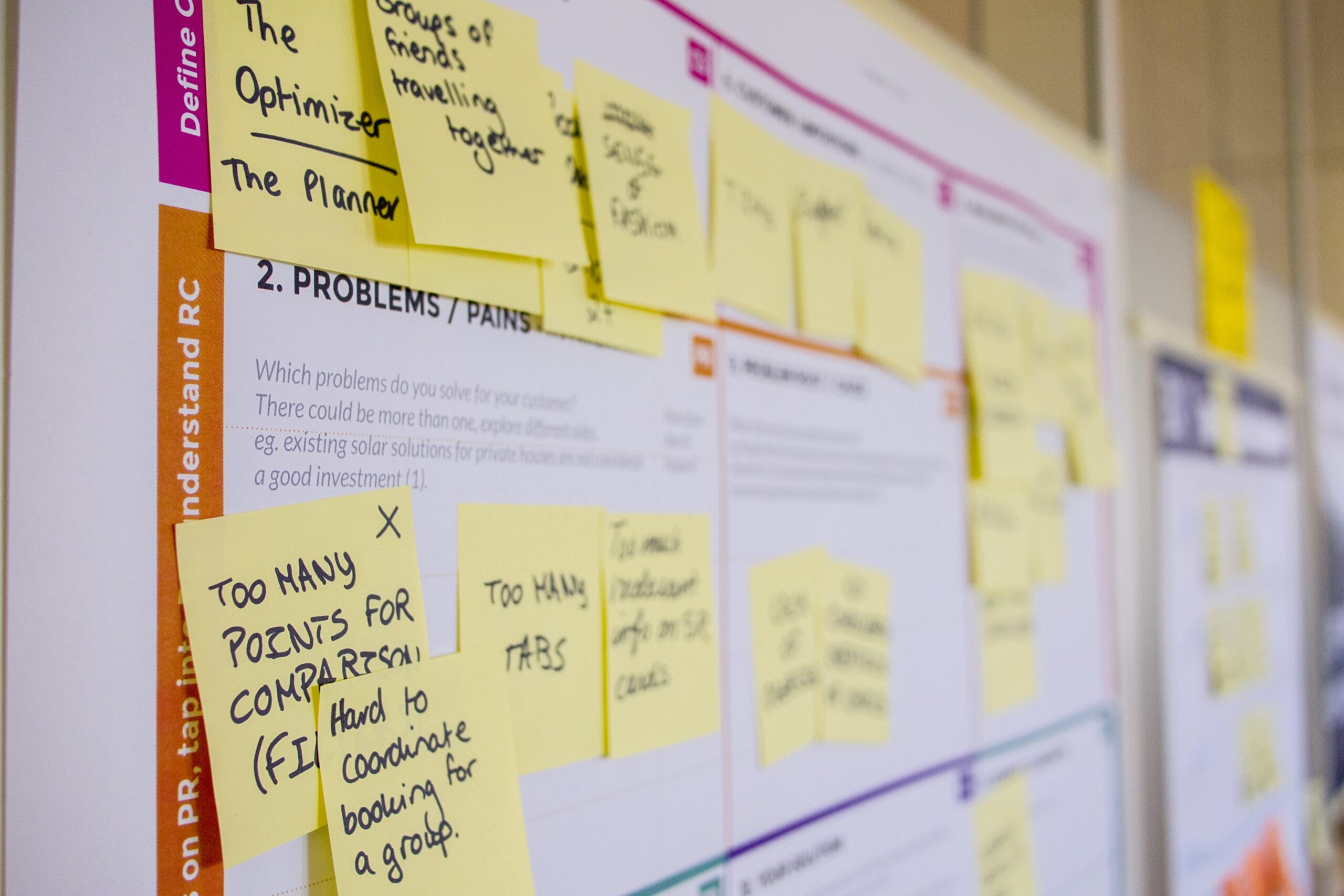How To Write A Project Plan: Components Of A Successful Venture
Knowing how to write a project plan, especially for current or aspiring business owners will save you a lot of stress. A good project plan can help you stay within budget, scope, and schedule and can even make a difference in making your project a success. Not everyone is equipped to create a simple project plan so The Write Direction is here, to make sure that you can easily bring your vision to life and plan accordingly to make it a reality by bridging the gap between you and professional business writing.
Parts Of A Project Plan
The University of Massachusetts Boston says the project plan definition is simply the enumeration of all the tasks and steps necessary before reaching a milestone or producing a desired outcome. It is a document that is part of a larger “project planning phase” where the project manager and a project team work together on many aspects such as deciding on a technical design, creating the task list, doing resource planning, drafting a communications plan, deciding on a budget, and scheduling. Project charters are decided on a macro level and delegating these specific work plans makes it easy for the tasks to be completed on a micro level by various team members.
The components of project planning are not a one-and-done thing, they must be consistently reviewed as the project is worked on to ensure that the plan is being followed through. Poor planning is attributed to many failed projects which makes the project planning process an important precursor to any successful venture.

Why A Project Management Plan Is Necessary
When trying to achieve a goal, no matter how big, small, complex, or simple, planning should never be overlooked. Especially for projects started by organizations with many people working towards a common goal, the first step is to get everyone on the same page. Here are the top 4 reasons why you should never skip project planning steps.
- To reach a consensus within the team
Every team member of an organization is responsible for different things. They also have different priorities and strengths that all play a greater role in making sure operations move smoothly. A project plan simply ensures the whole team not only understands the goal but agrees with it. This lowers the chance of confusion during the execution phase. - To avoid scheduling conflicts
A good project plan template can communicate which teams are doing which tasks. A business or organization could be working on many projects simultaneously which is why scheduling is so important. It is a reference point for when a department, team, or person is ready to start on a specific task. - To monitor project goals and scopes
Because multiple projects can be worked on simultaneously, it’s important to not lose sight or track of more pressing time-based projects whenever new tasks come up. Knowing how to write a project plan correctly comes in handy because it keeps everyone in check and reminds everyone of their priorities no matter if new ones get added.
- To hold team members and stakeholders accountable
When a project plan is laid out, all expectations are communicated between organizational members and stakeholders. It saves time going back and forth asking for updates. So long as everyone follows the plan, everything can be resolved and completed in a timely and organized manner. s for how to complete specific tasks.

Components Of A Project Plan
If you’ve never made a project plan document before, you might look at project plan examples available out there as reference but be reminded that no two projects are the same. Here are some project plan components you’re going to want to add to your project plan outline.
- Project Tasks
Project tasks are a specific work list that must be done by the organization. It even specifies which project phase the task is in, the step-by-step process to completing it, and the group of people meant to work on it. - Project Schedule
A good project schedule has clear progress indicators that can tell the project manager how far along and successful the timeline is being followed. The schedule is usually visual and it has specifics including task start dates, project duration, and deadlines. - Key Milestones
A project plan should always identify the milestones they want to achieve. This includes major events, dates, decisions, and final deliverables that are used to track the project planning process.
- Dependencies
They are various working parts of completing projects especially large complex ones. There must be a line or order that connects these tasks to ensure each department is following the correct order and work process since they are all dependent on each other. - Resources
The resources refer to the specific person or team handling or completing certain tasks. This is important because it can tell anyone from the team who to contact or who is responsible for each task.

How To Write A Project Plan In Five Easy Steps
Step 1: Discovery and Definition
One of the most important first and crucial steps to how to write a project plan is getting to know your team and your stakeholders. These are the people who can help you make clear and defined goals because they have the expertise and the expectations. They will tell you what you need to know regarding the project scope, goals, outcomes, and even risks.
Make sure you’re on the same project with your stakeholders and project contacts and ask them very early on what they expect from you. Ask tough questions like processes, organizational politics, and even general risks before you even craft your project management plan. Some other factors you need to discuss with your stakeholders include project ownership, stakeholder involvement, deadlines, related or similar projects, and most importantly, the best line of communication.
On the internal side, get to know from your team who the experts are, what their interests are, what their collaborative and communication styles are, their availability, and of course, their workload. In how to make a project plan, you need to be thoughtful and considerate of your team members because it will even increase the chances of delivering a successful project.
Step 2: Outlining and Drafting
With both your team and stakeholders in mind after the pre-planning phase, you can now draft your project plan format. A great first step here is to write and outline how the project will work at a macro level. The draft can include the following components:
- Main deliverables and the tasks after their completion
- What is the client’s approval process is
- Specific deadlines and timeframes
- Which resources are needed to complete certain tasks
- A list of assumptions
- A list of absolutes relating to budgets or timelines
Mishaps and risks during the planning phase or even during execution cannot be entirely avoided but they can be mitigated.
Before you get to how to present a project plan to your stakeholders, make sure the entire team has reached a consensus. How to write a project plan is not a one-man job for the project manager, it’s a team effort. Get input from your team as you draft the plan and be realistic when it’s time to execute it. Having discussions and open communication with the organizational members is vital to creating a successful project plan. The Write Direction understands the importance of internal and external communication in the workplace which is why we have an extensive list of professional writing services to aid organizations and businesses.
Step 3: Formalizing and Formating
With all ideas out in the open, it’s time to formalize and format your project plan. If it is a complex project, you’re going to want to utilize as much time in your hands executing it instead of figuring out the right way to communicate to the rest of your team and the stakeholders what the plan is. This is where The Write Direction comes in handy. The Write Direction offers a project plan writing service where you can have a professional craft your custom project plan. All you need to do is reach out to the operations team and give them an overview of what you’ve learned in steps 1 and 2 and our operations team will choose the writer most fitting for the job. We have a team of writers well-versed in a variety of industries and disciplines so no matter what the project is, we’ll match you with the right writer for all your business documentation writing needs.
Step 4: Presentation and Confirmation
After you’ve figured out how to write a project plan, or rather who can write it for you, run a final check with your internal team. There might be dates and times that shifted during the planning process and you need to stay on the same page internally before pitching the plan to stakeholders. Review the times, dependencies, times off, meetings, milestones, final deadlines, and major changes internally before moving forward with the plan crafted with the help of The Write Direction.
Once the internal team has signed off, you can present the plan to your stakeholders. Include an executive summary that can come in the form of a project brief that recaps the methodology, resources, assumptions, and deadlines. Inform your stakeholders of the overall project process and pace, major deliverables and timelines, when they can review deliverables, how far along the project is from the deadline, and whether they can give you a little extra time in case of any mishaps.
Step 5: Execution and Adjustment
Your last and final step to how to write a project plan is execution! If your plan is rock solid, no matter the chaos or mishaps that come your way, the team will be fully prepared. Project plans are “living documents” that need constant checking, updating, and monitoring. Throughout the whole project planning and execution process, the project manager should stay on top of things making sure both the internal team and stakeholders are happy.

Go With The Write Direction
For all your professional technical and business writing needs, you only need to trust The Write Direction. In all our years in business, we identified the need for highlighting the importance of organizational processes and how they greatly benefit businesses long term. The documentation you need to ensure your operation is working seamlessly includes policy manuals, procedure manuals, administrative guides, and more.
Even if you’re just an aspiring business owner, let us help you create foolproof business plans to ensure your success from inception to execution!



